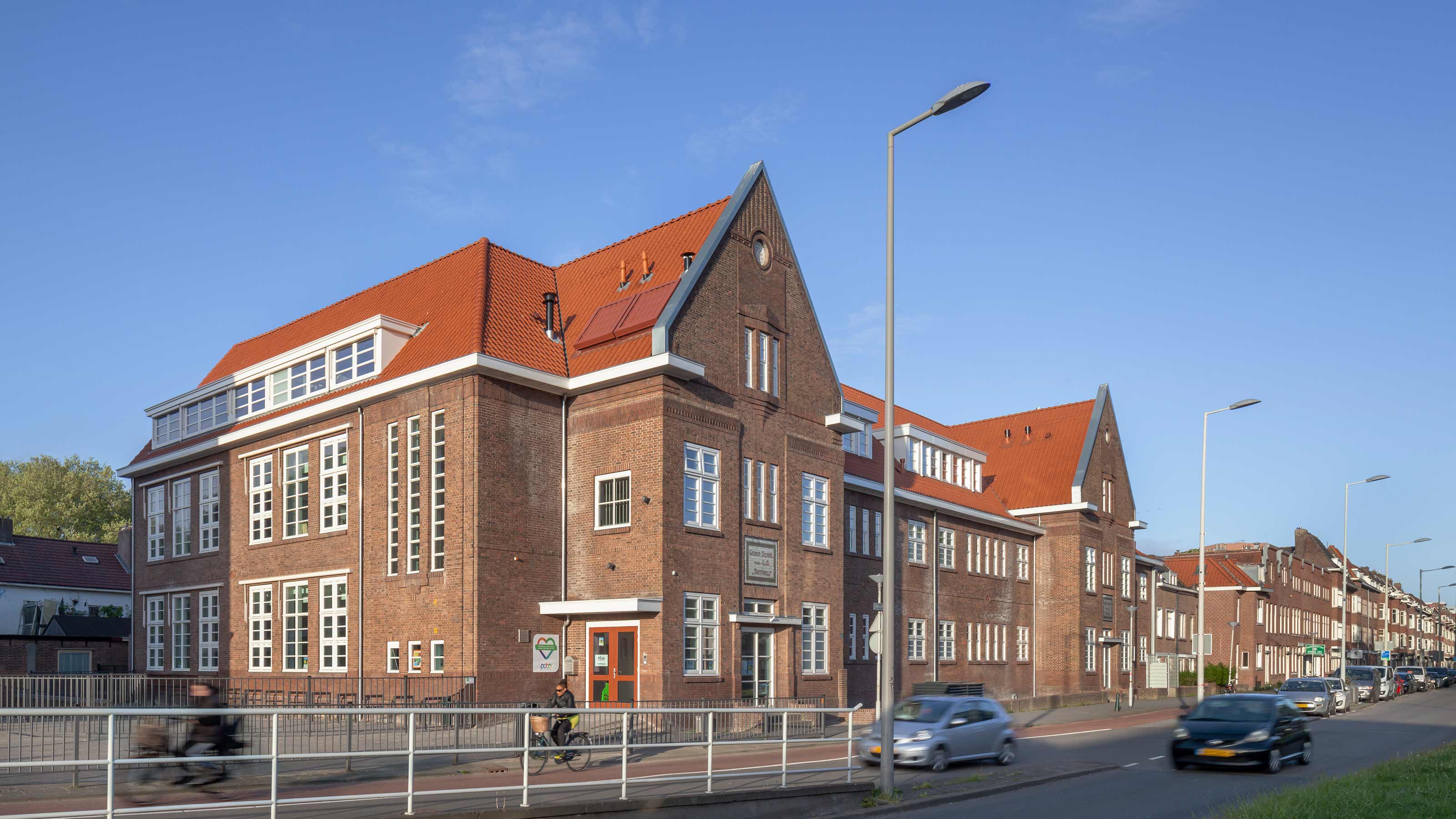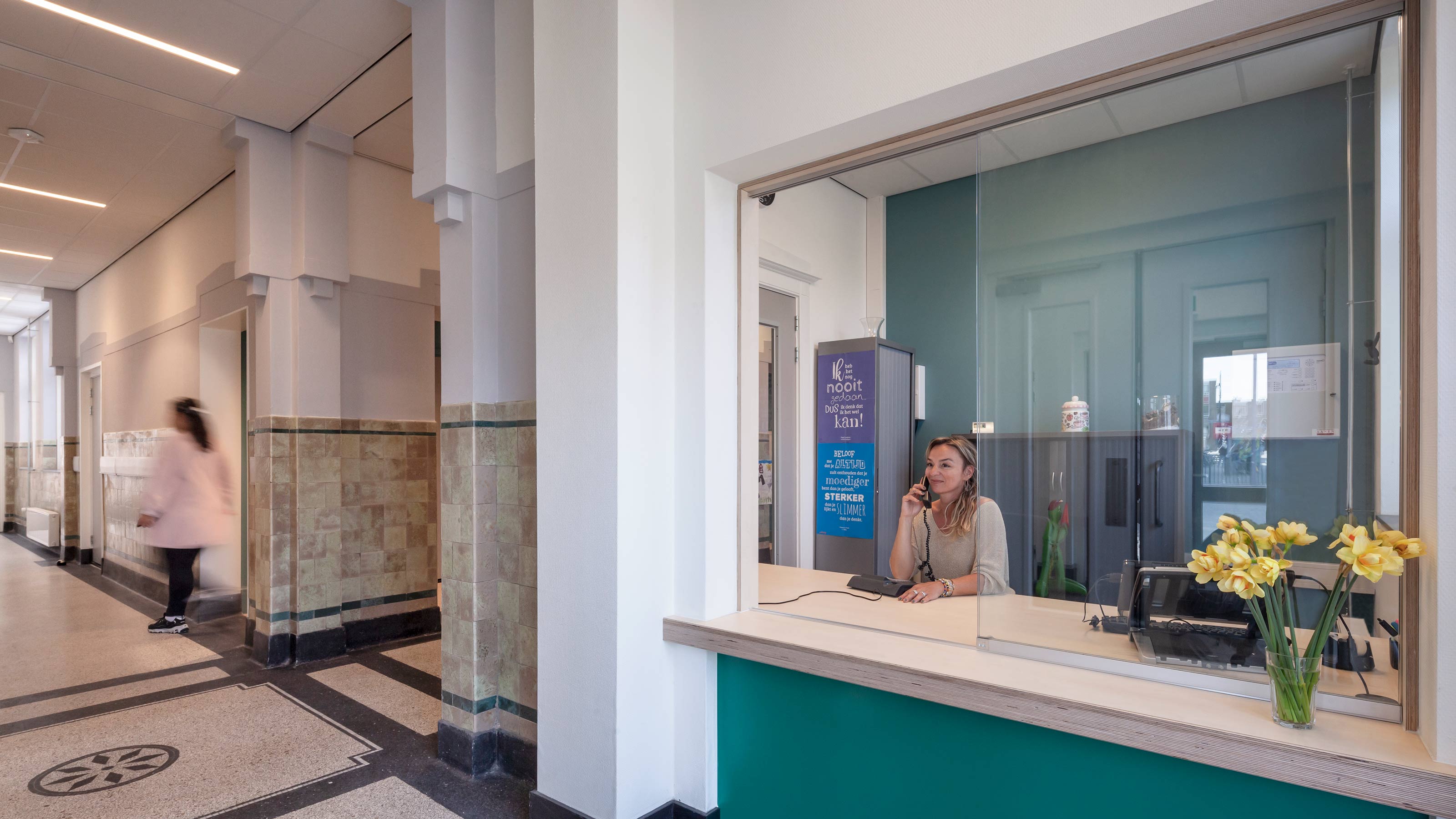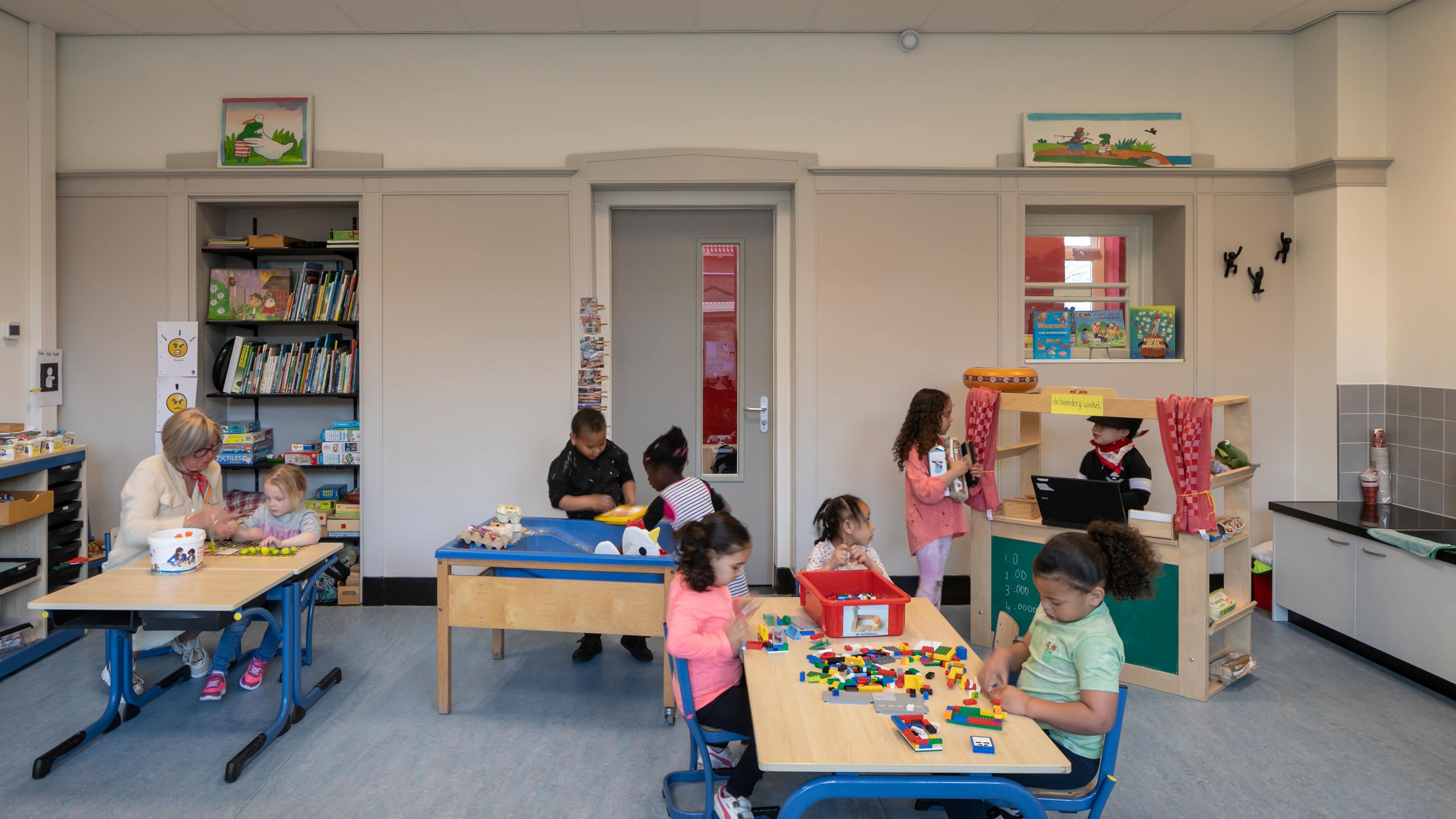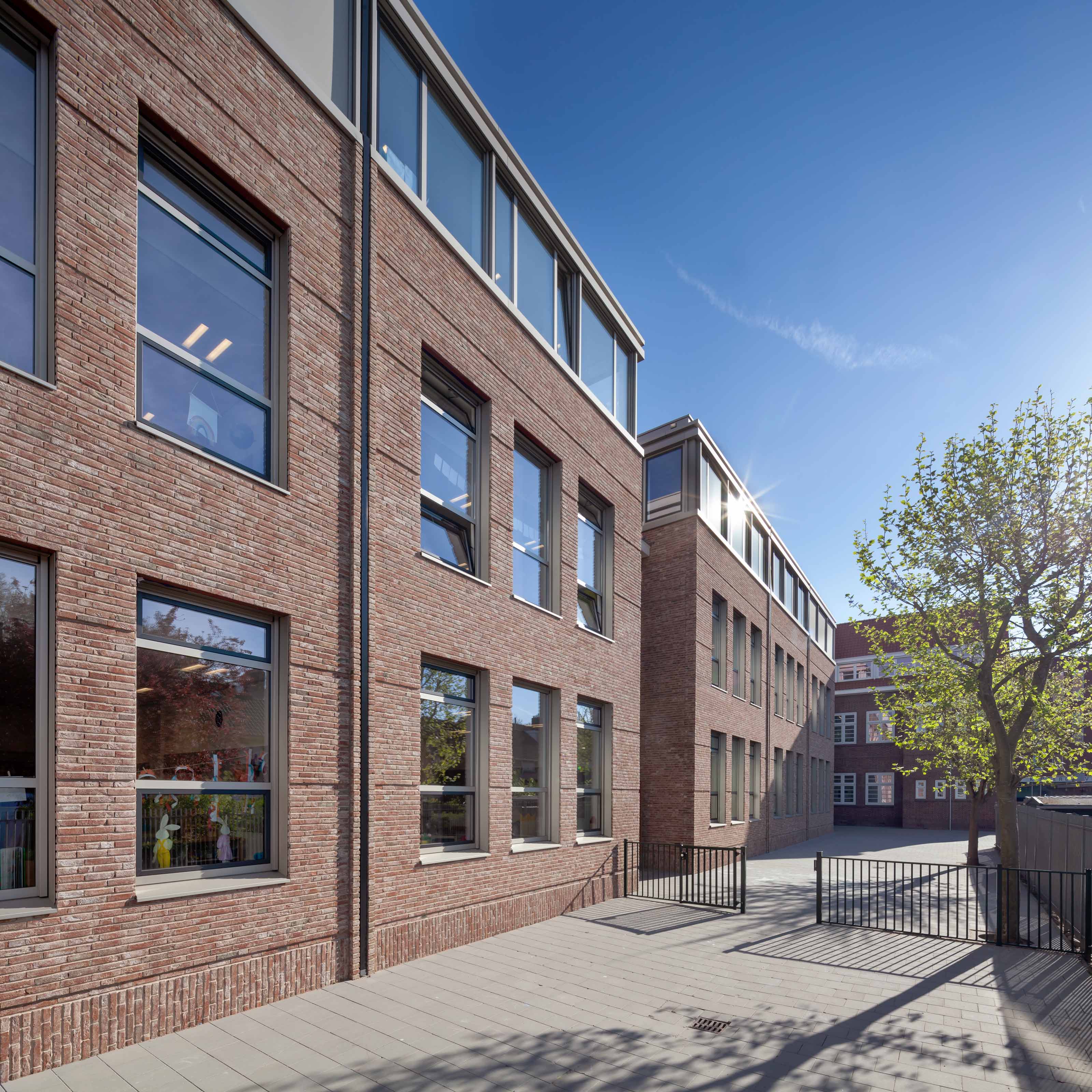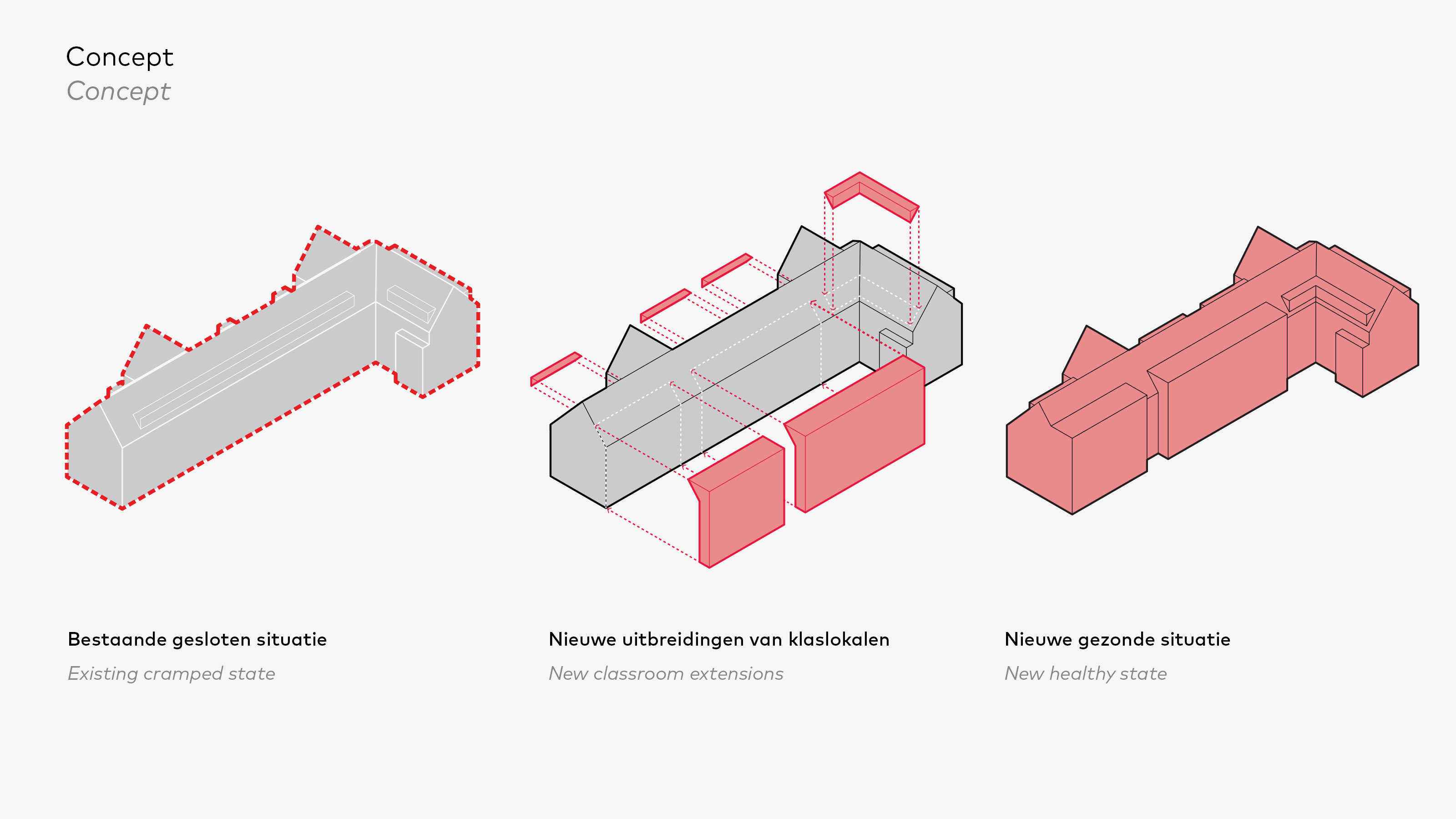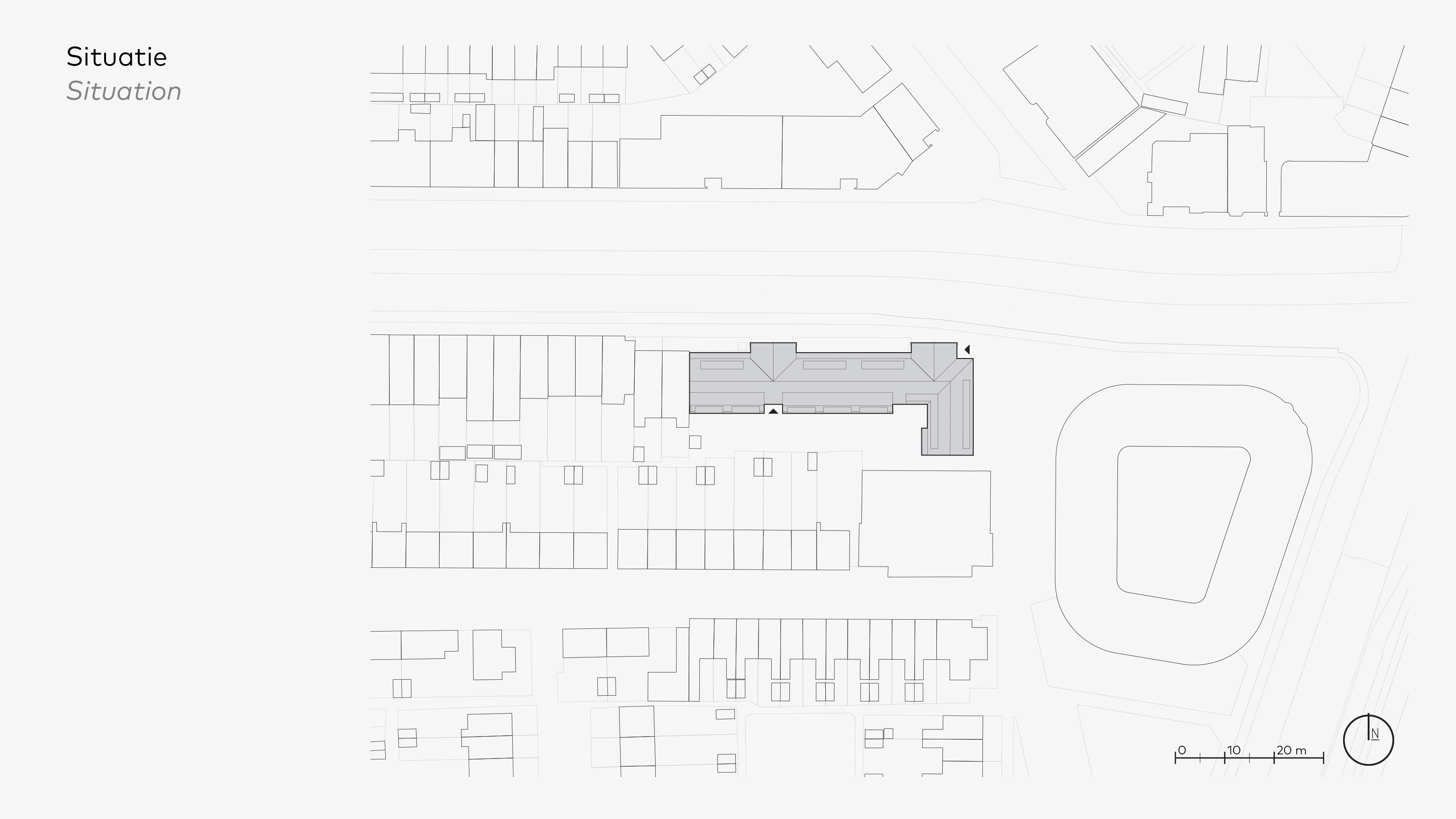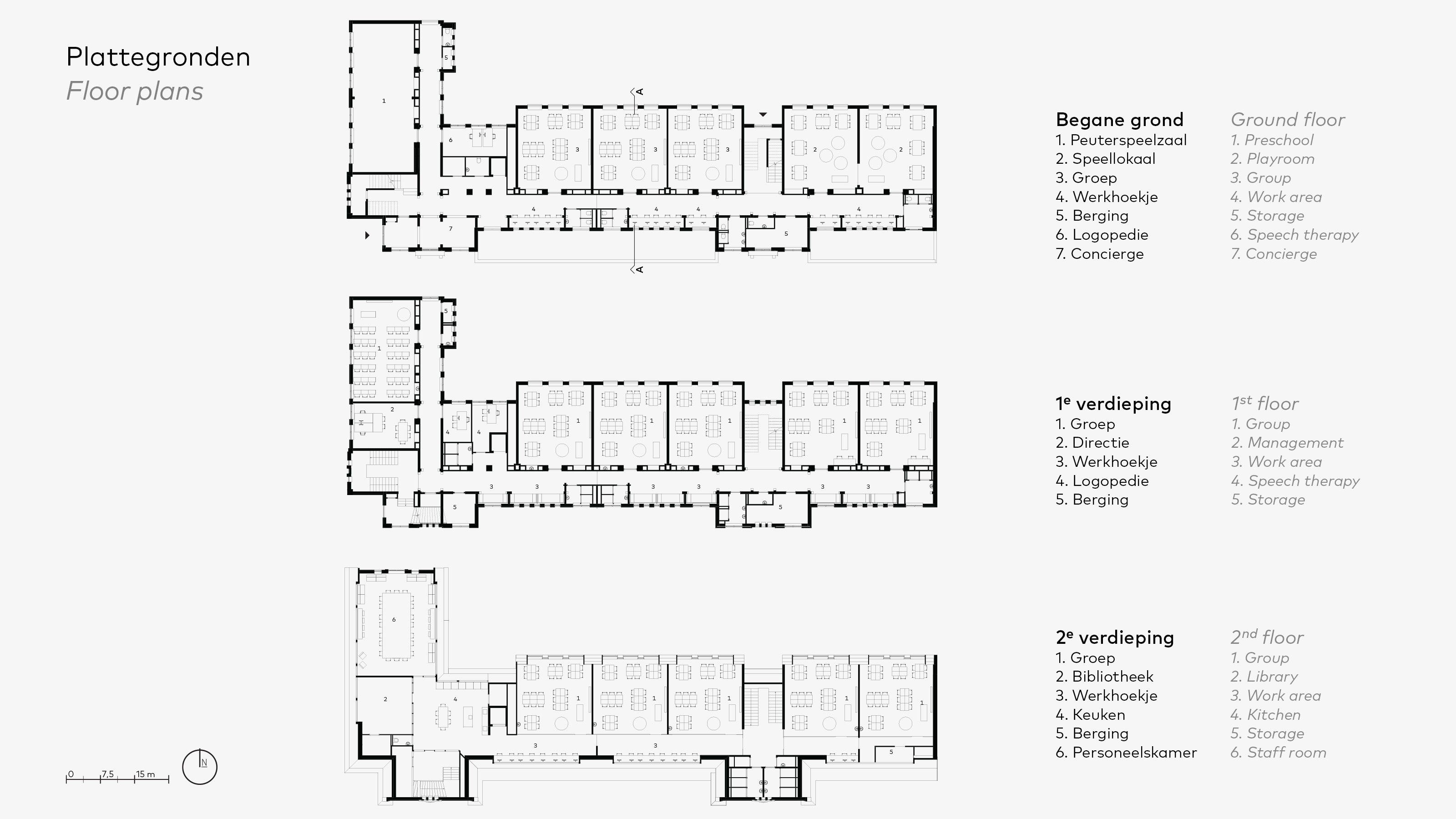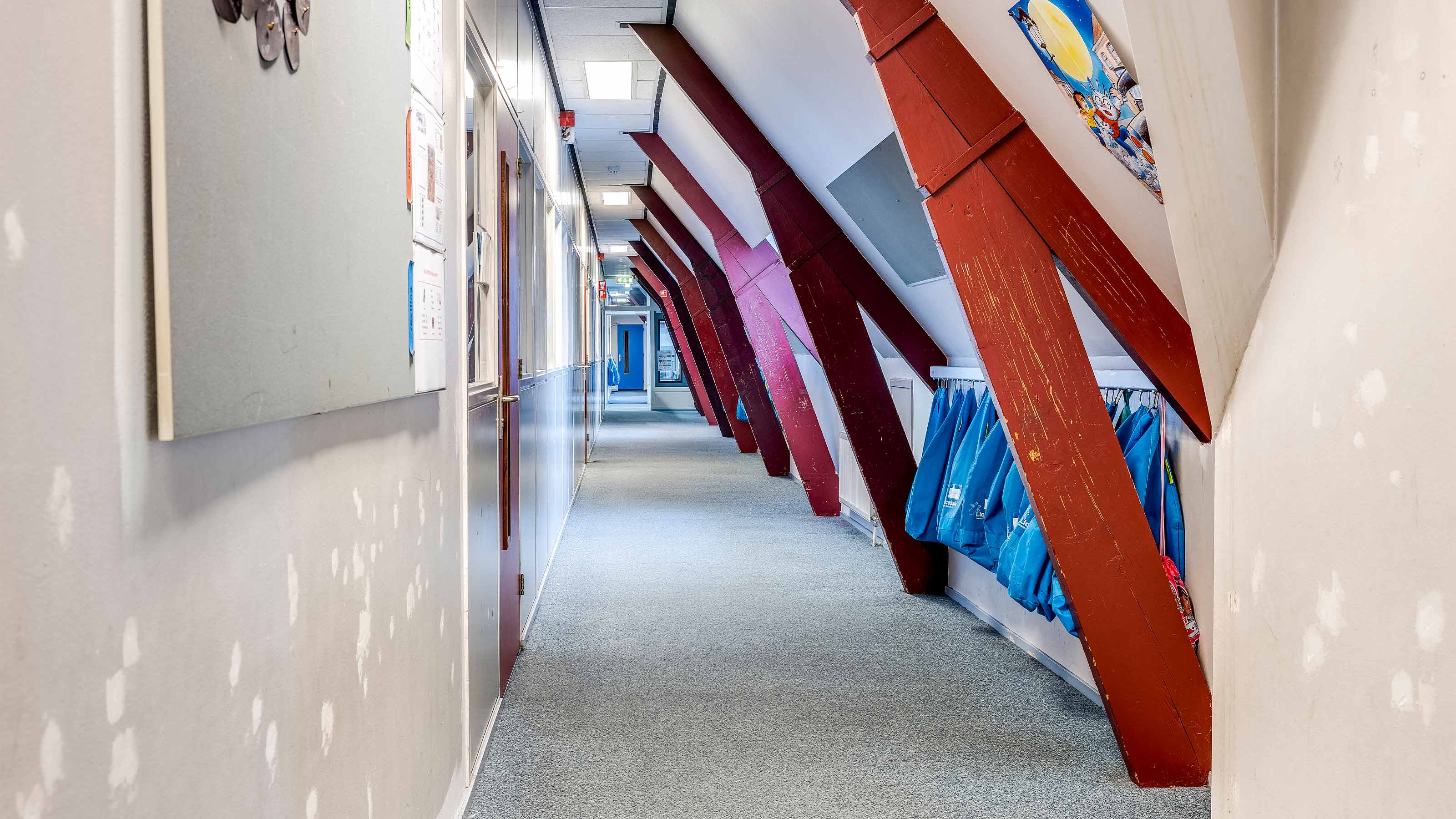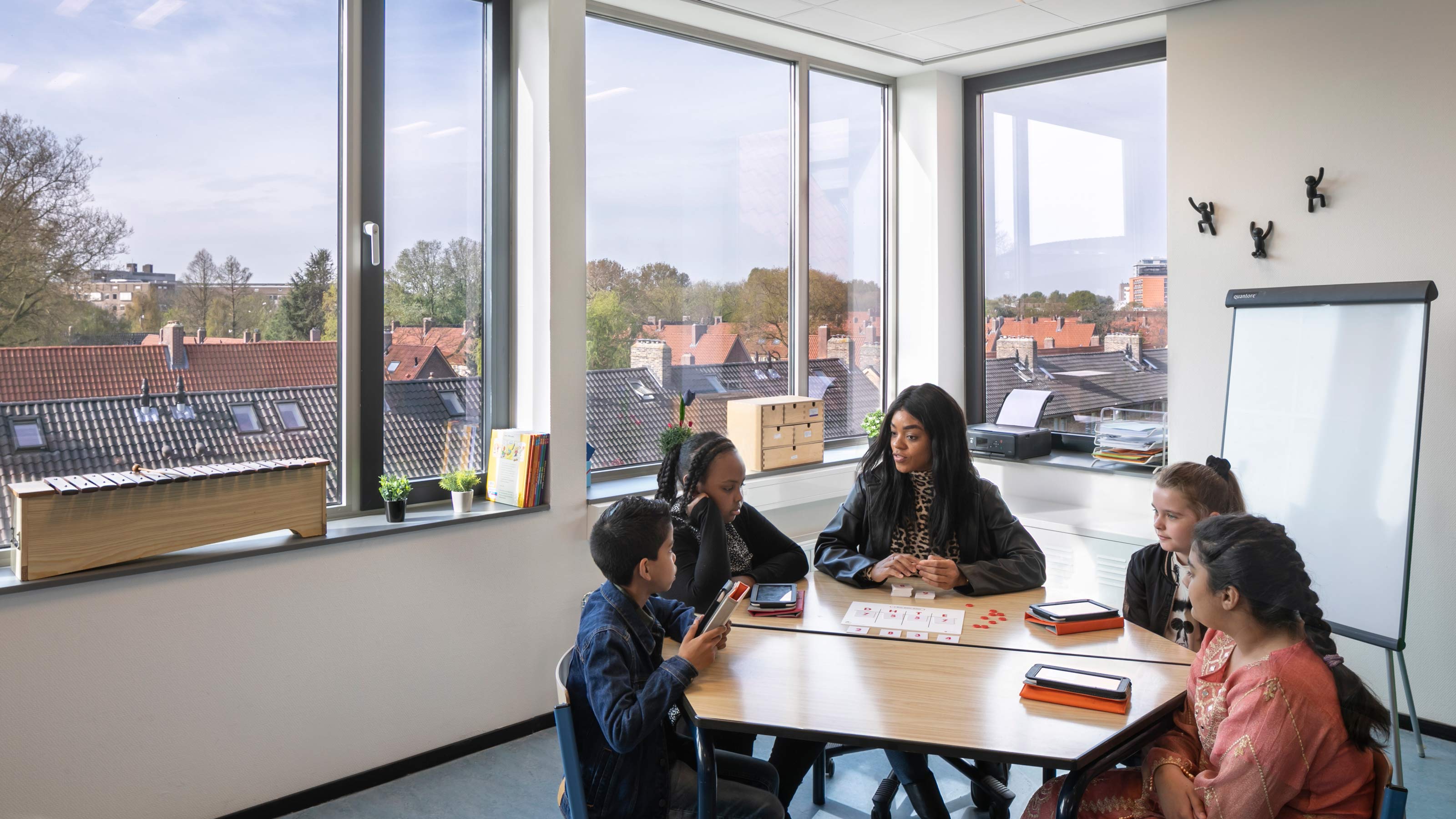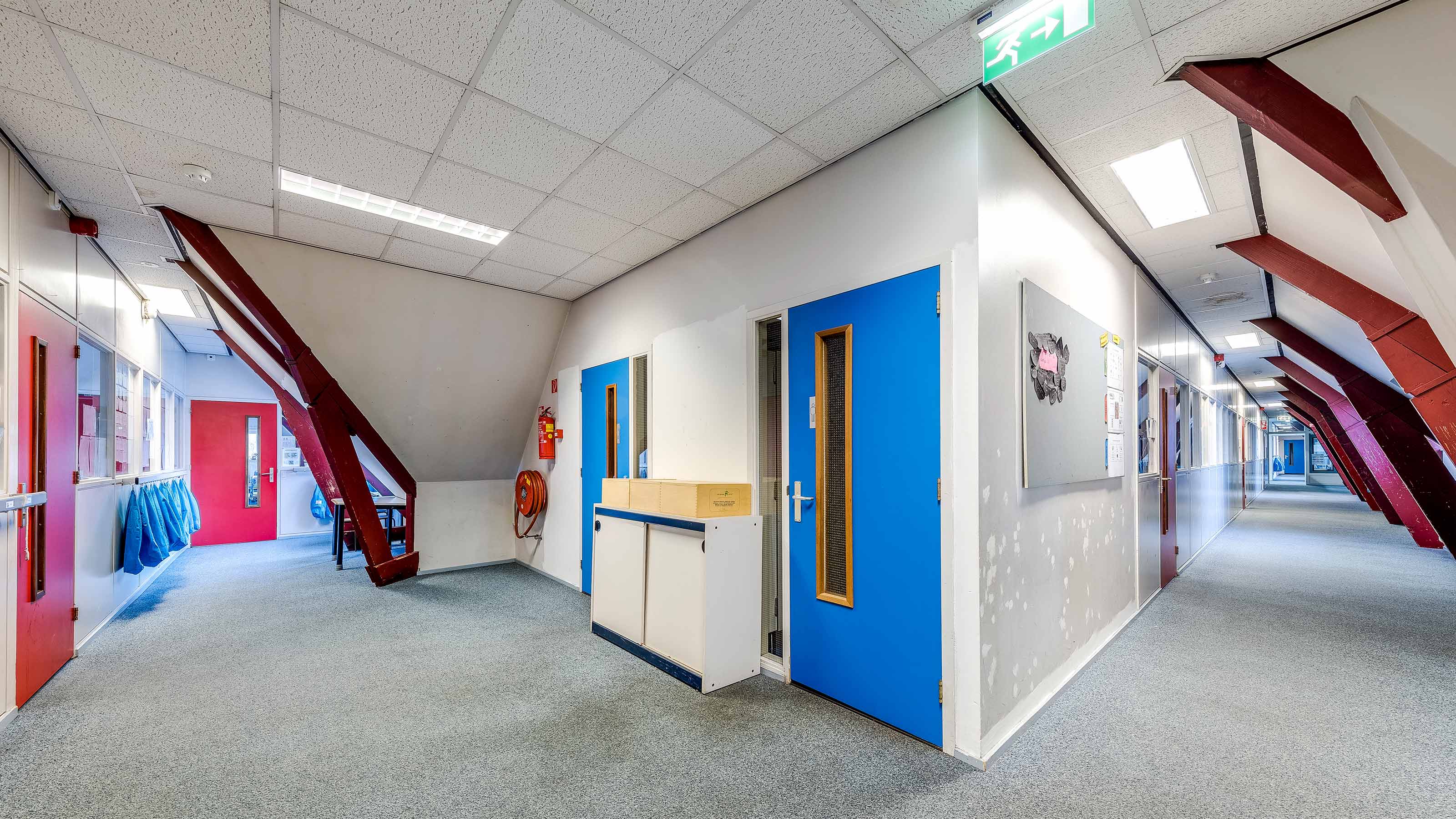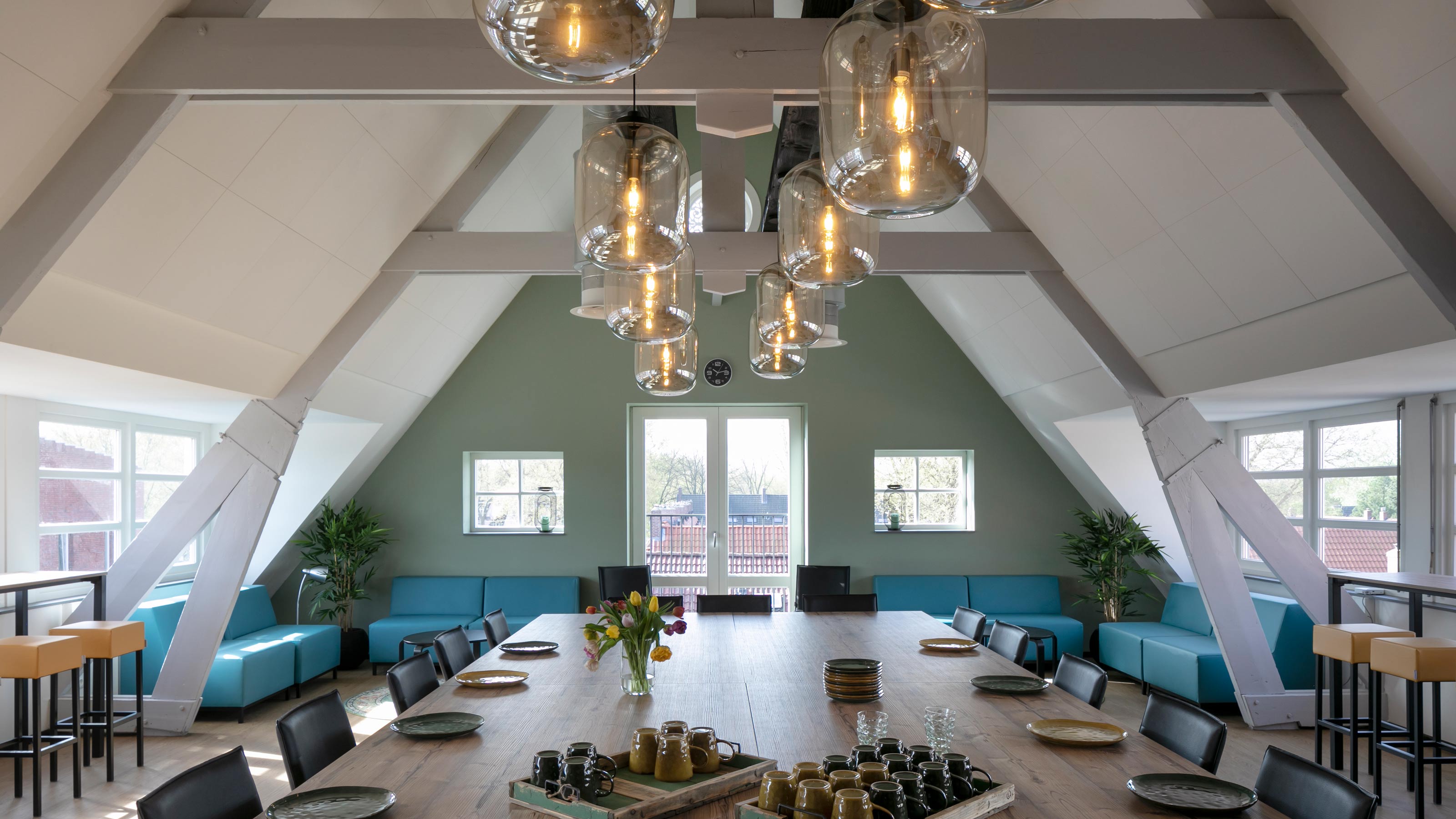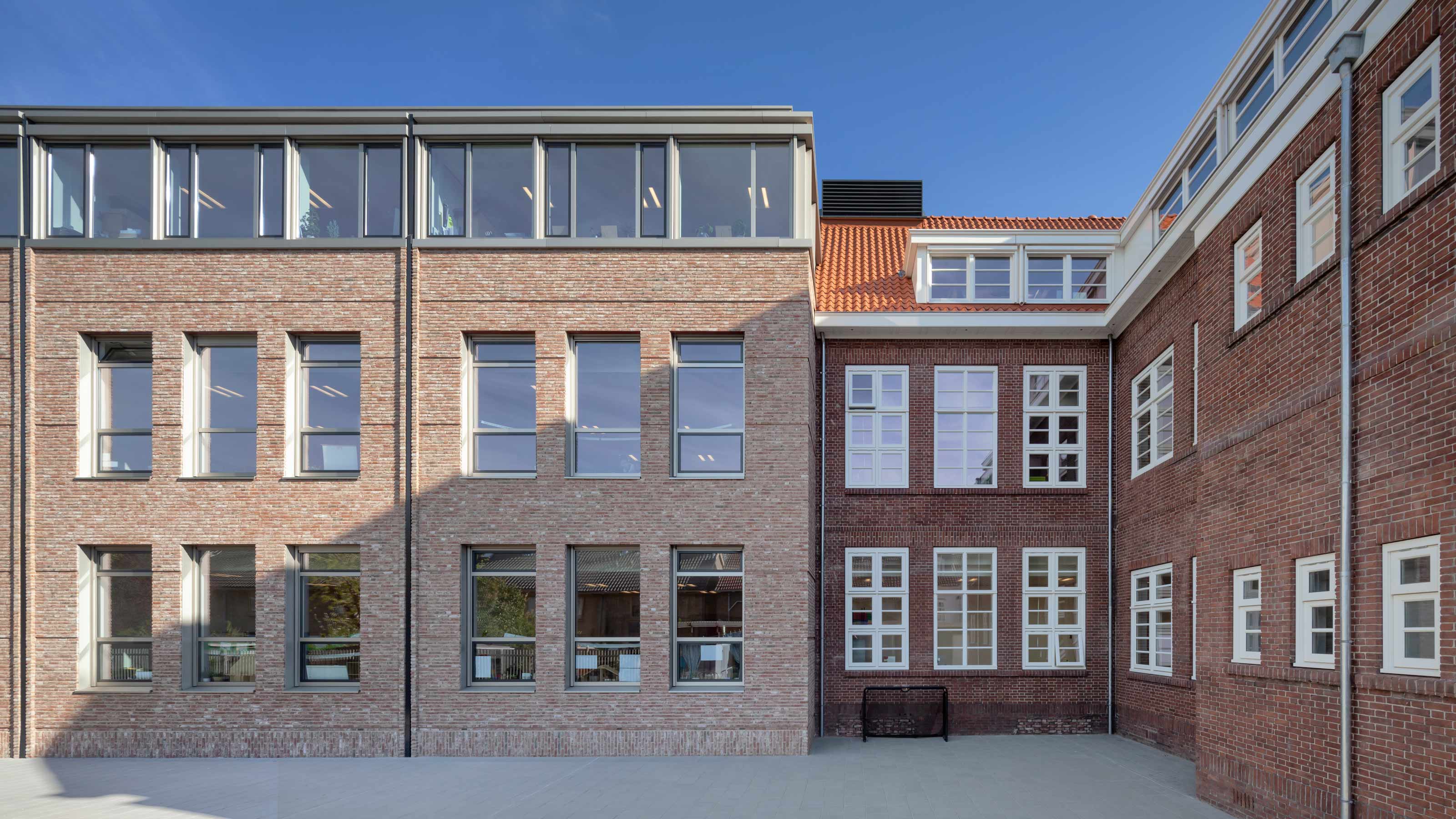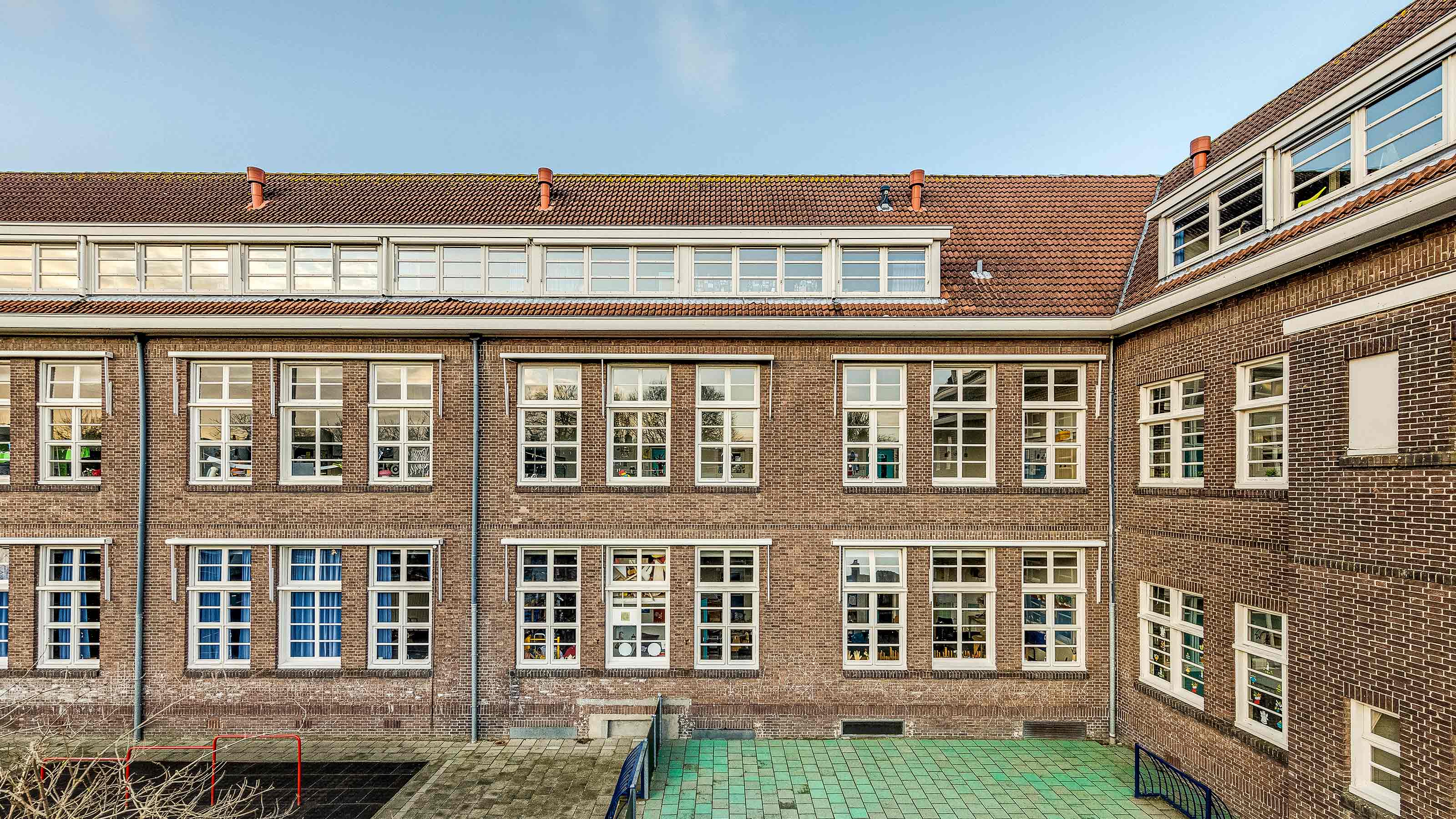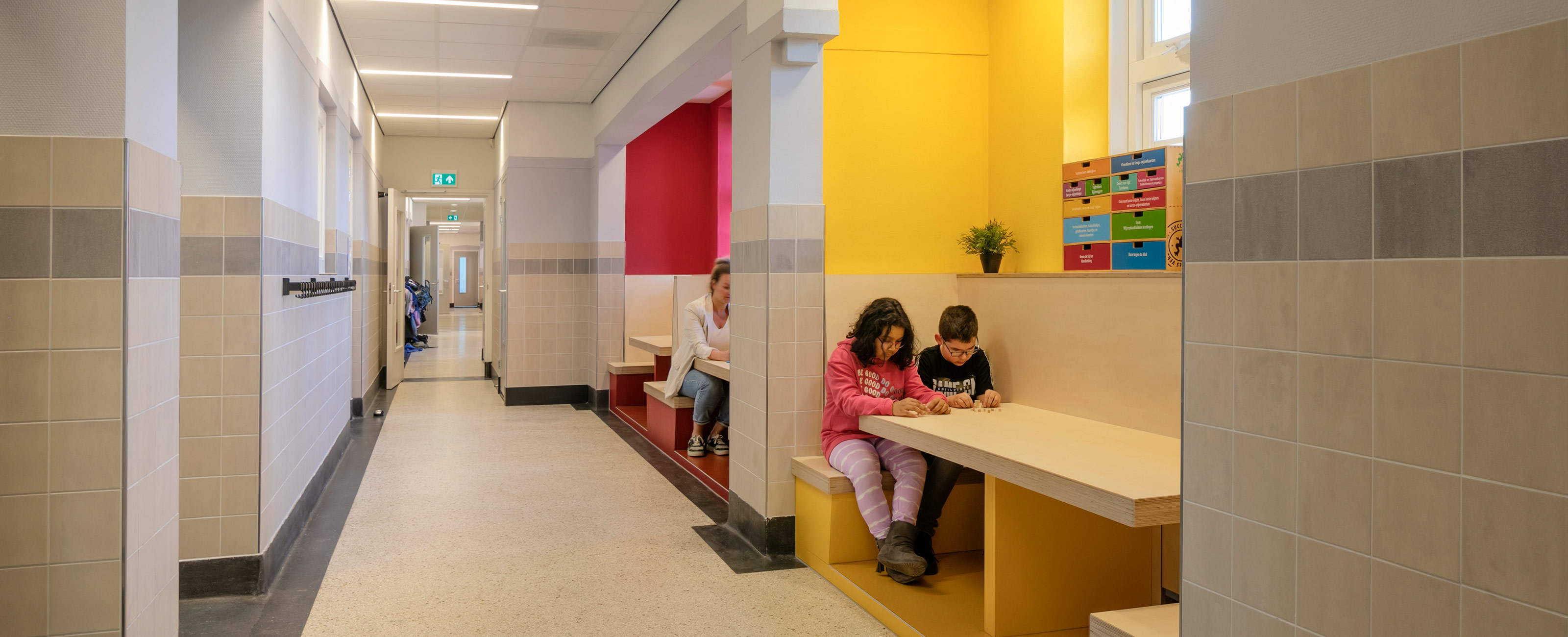
De Pniël Primary School
Children and teachers at Pniël School have a fine and inspiring school building again thanks to renovation and extension
The Pniël School in Rotterdam undergoes a complete metamorphosis
A number of tactically chosen architectural interventions give the school a completely new appearance that reflects modern education
The Pniël School in Rotterdam has undergone a striking metamorphosis involving renovation and extension. A number of tactically chosen architectural interventions have given the school a completely new appearance that reflects modern education. Inflexible classrooms and gloomy corridors have made way for multipurpose and playful learning environments. The renovation has let wonderfully distinctive elements shine again. Now the Pniël School and the children are ready for a healthy future.
The Protestant primary school is housed in a monumental structure built in 1920, which forms part of the protected cityscape of the Vreewijk district in Rotterdam. The school occupies a central position among the nearby multicultural neighbourhoods and thus plays an important role in the development of the community.
The Pniël School urgently needed to make a fresh start and open up to its surroundings. The old layout no longer met the requirements of contemporary education, nor was it a pleasant place in which to work. Cramped and gloomy classrooms with low ceilings characterised the primary school. The inefficient layout of the upper floors offered too little space for independent learning and working. Initially it seemed as if new development would be the only way to meet the long list of wishes. In 2018 EGM architects was commissioned to carry out the complete design for the high-grade renovation of and extension to the Pniël School.
Space for independent working
The toilets and storage units along the corridors behind the facades have been moved to more central and logical positions within the building. This has created multipurpose corridors that are pleasant and wide with plenty of daylight, which can be used for projects or for calm and individual work. The suspended ceilings on the attic level have been removed and the distinctive timber roof structure has been exposed right up to the ridge and restored. That has increased the free height from 2.60 to about 5 metres and created pleasant areas for learning, playing and working, with more daylight, openness and through views. Teachers and support staff can make use of an attractive living room and kitchen for lunch, meetings and relaxation.
Authentic details
At the rear, the three-level extension has a new facade 1.80 metres in front of the original one. This makes all the classrooms brighter and more spacious. In terms of materials and details, the extension blends seamlessly with the existing building and the protected surroundings. A number of strategically placed new openings, for example at the main entrance, near the staircases and on the attic level, create larger spaces and through views, making the entire school more functionally flexible in use.
The building boasts many authentic details from the 1920s both inside and outside. These have been taken into account during the renovation and extension in order to preserve as many original details as possible and to restore them where necessary. Examples include the terrazzo floors in the corridors, the (new) decorative brickwork and the authentic 1920s glazed tiles on the walls.
Photography: Twelve Photographic Services, Scagliola Brakkee
